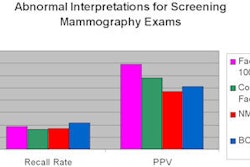Dear Healthcare IT Insider,
It's no news that the U.S. government is promoting widespread investment in healthcare information systems to increase efficiency and cost-effectiveness, with the overall goal of improving the quality of healthcare.
But small innovations in healthcare informatics can significantly affect patient care as well, and one such example serves as this edition's Insider Exclusive. The article describes how a radiology manager at the University of Maryland Medical Center harnessed an idea, some in-house software expertise, and the hospital's PACS to create an electronic peer review program for radiologic technologists.
The tool contributes to the radiology department's overall quality control efforts, which, both directly and indirectly, help improve healthcare treatment for patients of the hospital. Click here to read all about it in a story you're receiving several days prior to publication on AuntMinnie.com.
Radiology information systems are improving the delivery of critical results reporting, and they're also playing an important role in tracking whether the recipients are responding to the results. Automated e-mails augment critical results notification at Massachusetts General Hospital and improve ordering physicians' response. Electronic medical record systems can be used to identify the physicians who aren't reading or reacting to critical results reporting, with the potential to reduce the deficiencies in patient care that may occur. Read about one application by clicking here.
How much does a RIS improve productivity? It all depends, but an analysis of a large multifacility radiology private practice might motivate you to determine how much your RIS is pulling its weight.
What are some new and innovative ways in which you're using your healthcare systems? Please let us know by sending an e-mail to [email protected]. We'd be delighted to profile your innovations in our Healthcare IT Digital Community.



















